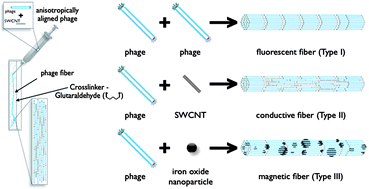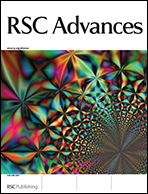Novel hybrid materials with multifunctionality are attractive systems because of their efficiency and versatility for carrying out tasks in parallel. In the present work, controllable formation of multifunctional and micrometer-sized composite fibers is gained via incorporating single-walled carbon nanotubes (SWCNTs) and magnetic iron oxide nanoparticles into a biotemplate, M13 phage in liquid-crystalline phase. It is found that these phage composite fibers possess high and durable natural fluorescence except those with SWCNT loadings higher than 10%. SWCNTs, imparting improved mechanical properties and electrical conductivity, align themselves parallel to the long axis of the fibers in the phage matrix. No SWCNTs or magnetic nanoparticles were observed on the external surface of phage composite fibers, so that the superficial phages are still able to provide binding sites for further surface modification. The composite fibers were also demonstrated to be non-cytotoxic platforms to support cell adhesion and growth. The virus-based multifunctional composite fibers, integrating fluorescence, electrical conductivity, magnetism, improved mechanical properties, and biocompatibility, offer a new prospect of an all-in-one tool, as well as potential applications ranging from tissue engineering to biomedical devices.

You have access to this article
 Please wait while we load your content...
Something went wrong. Try again?
Please wait while we load your content...
Something went wrong. Try again?


 Please wait while we load your content...
Please wait while we load your content...